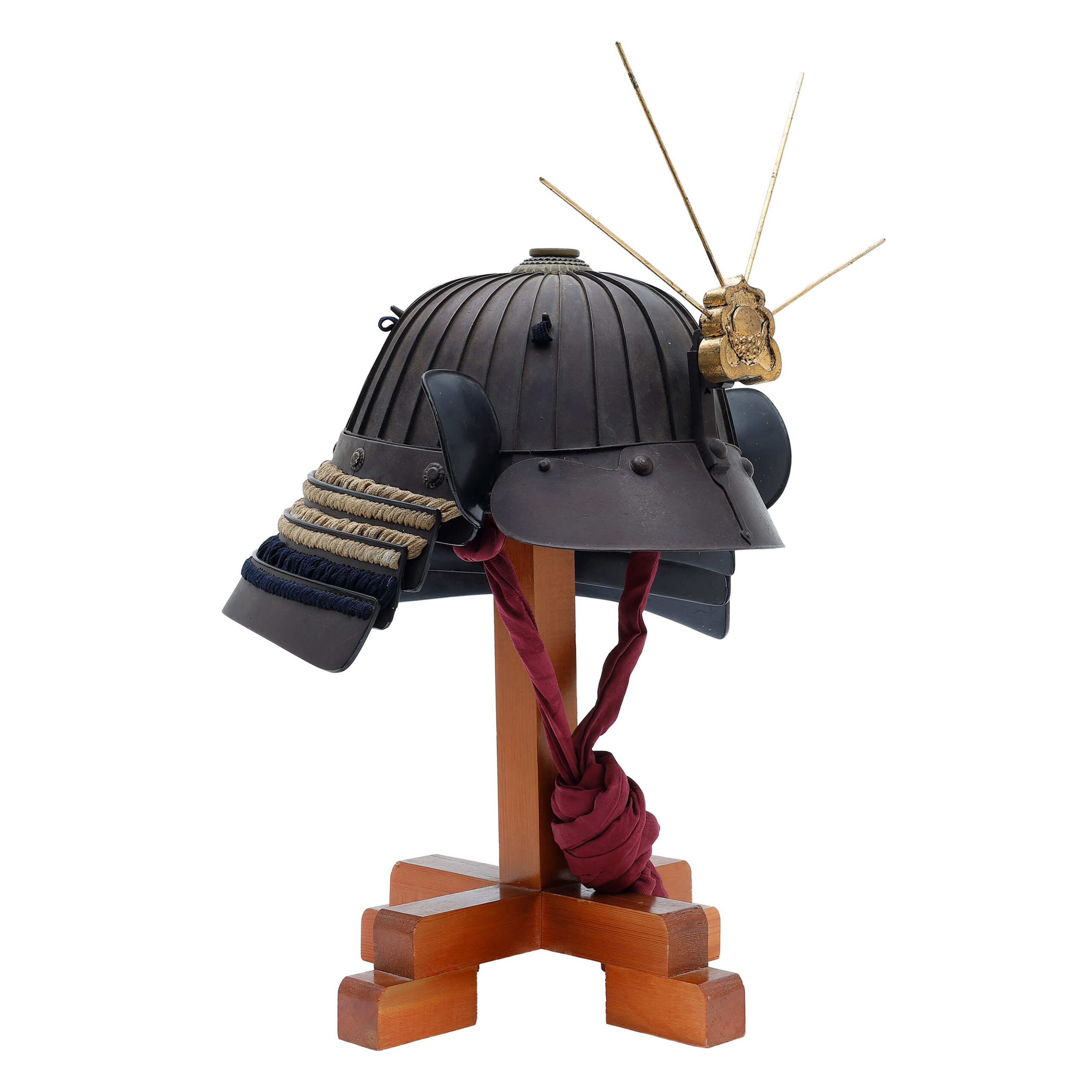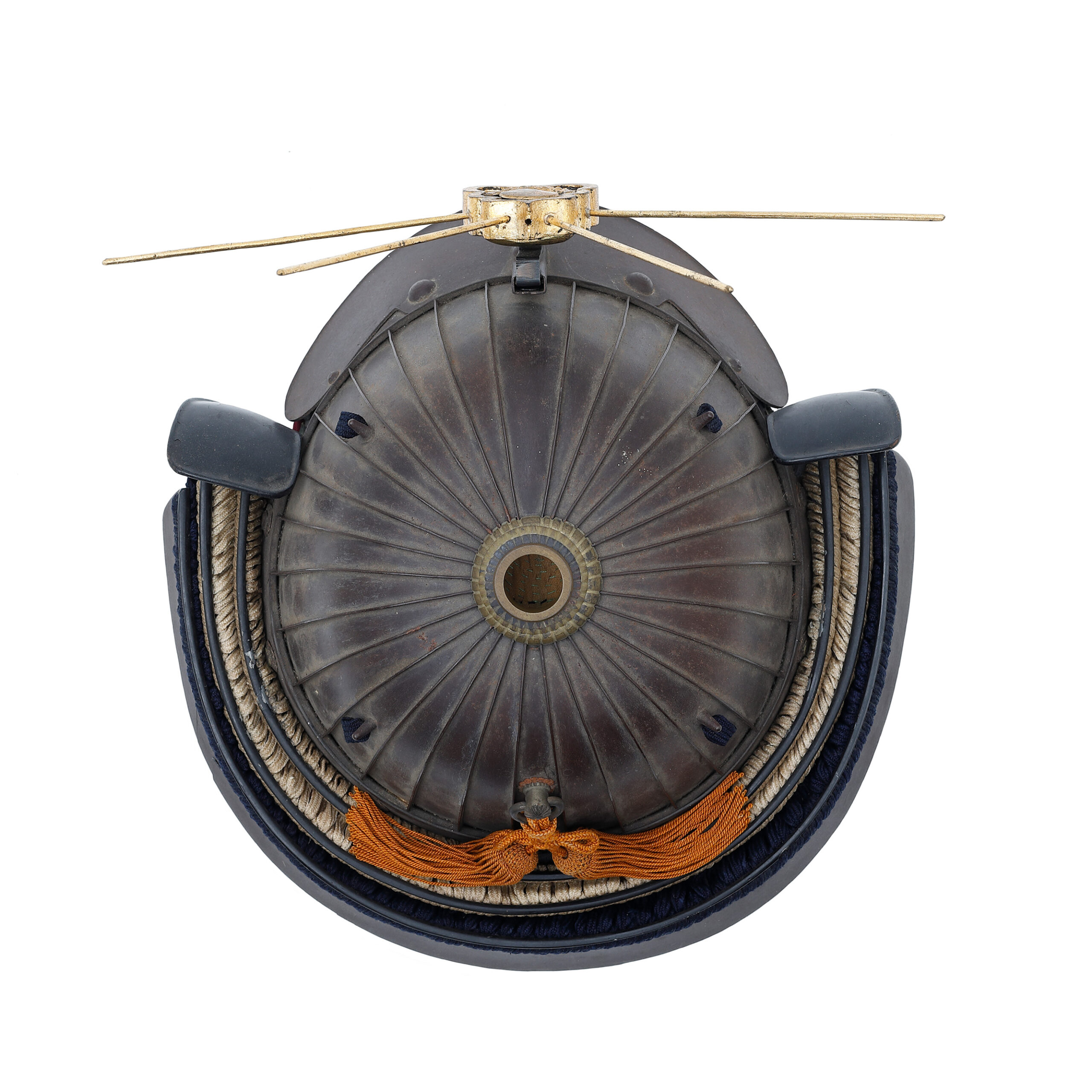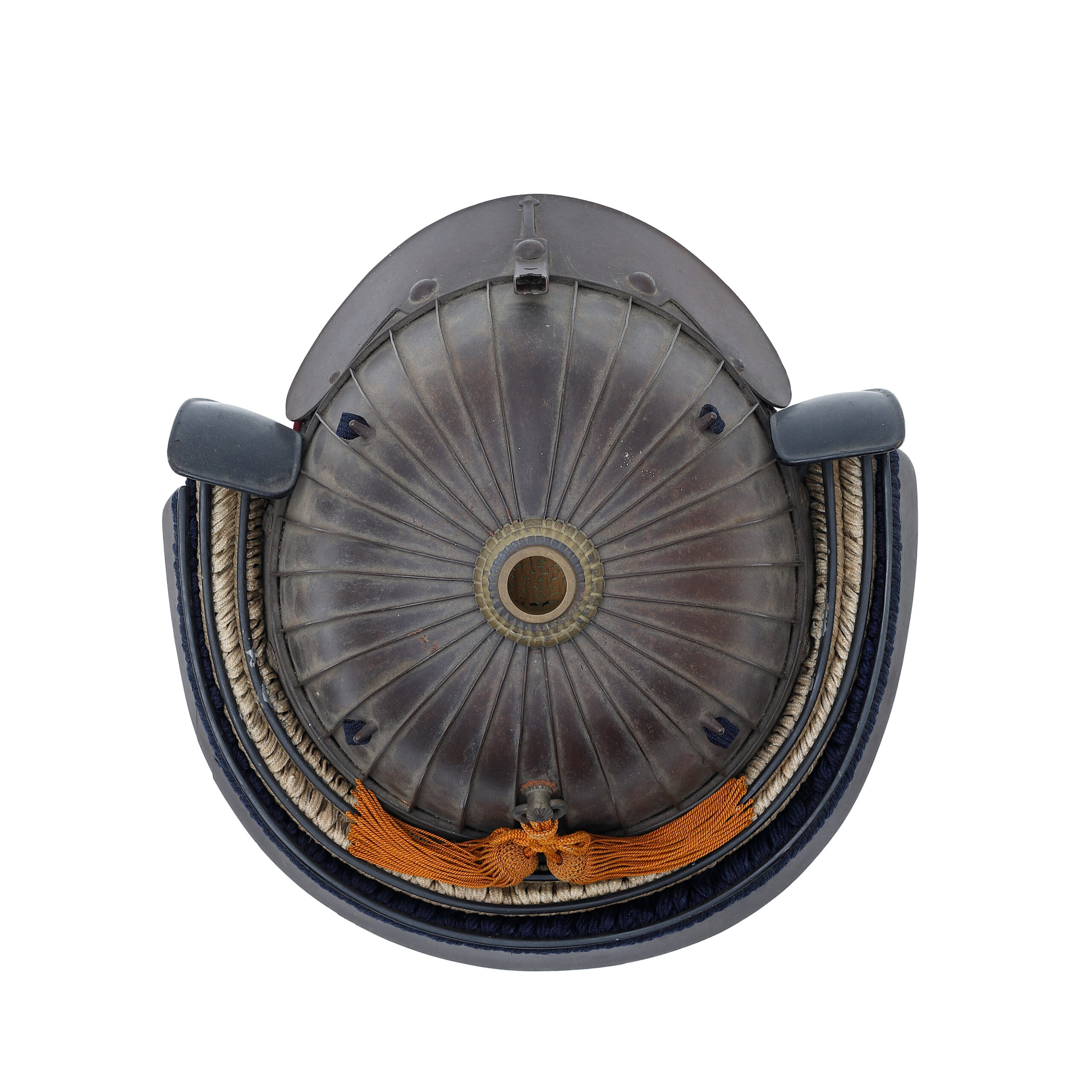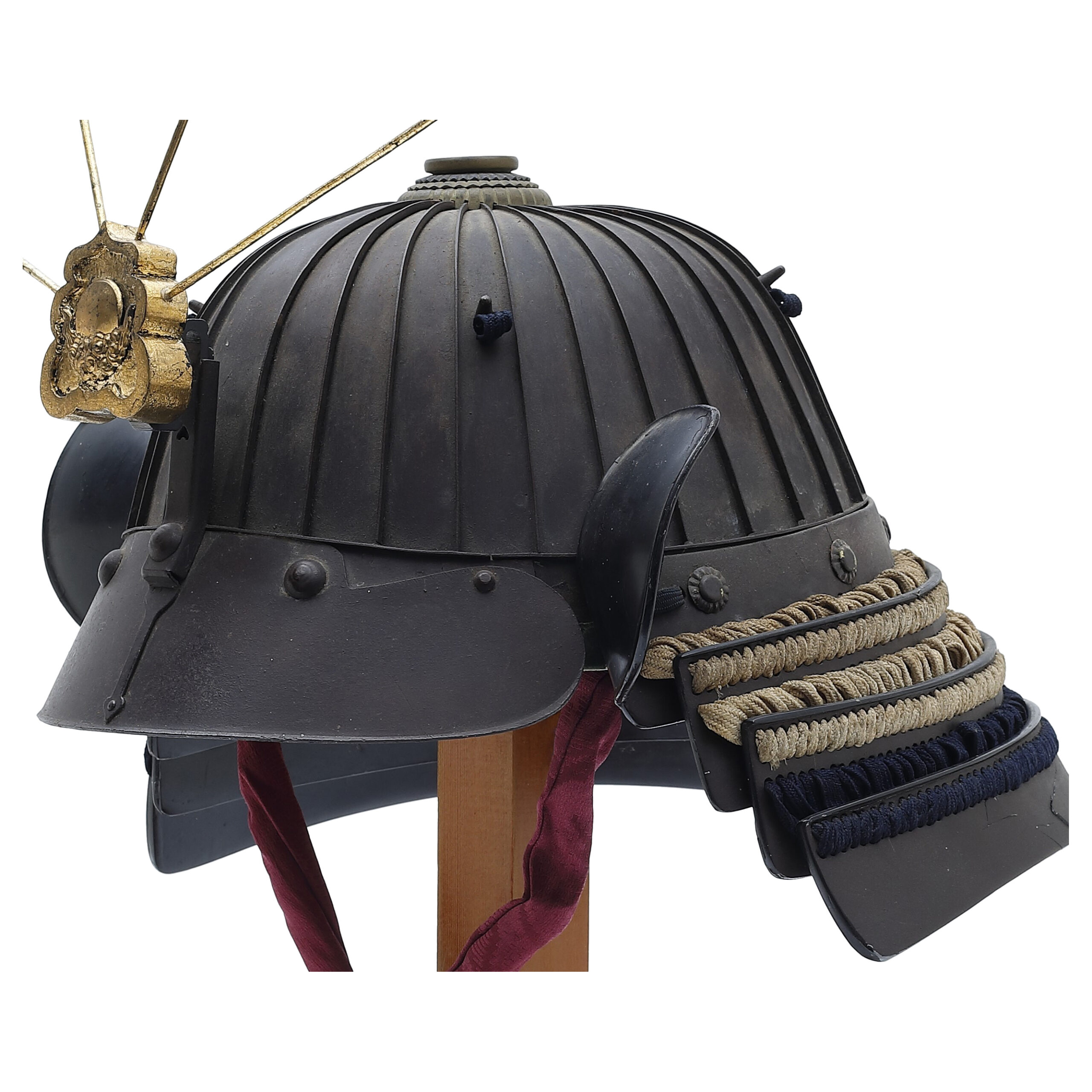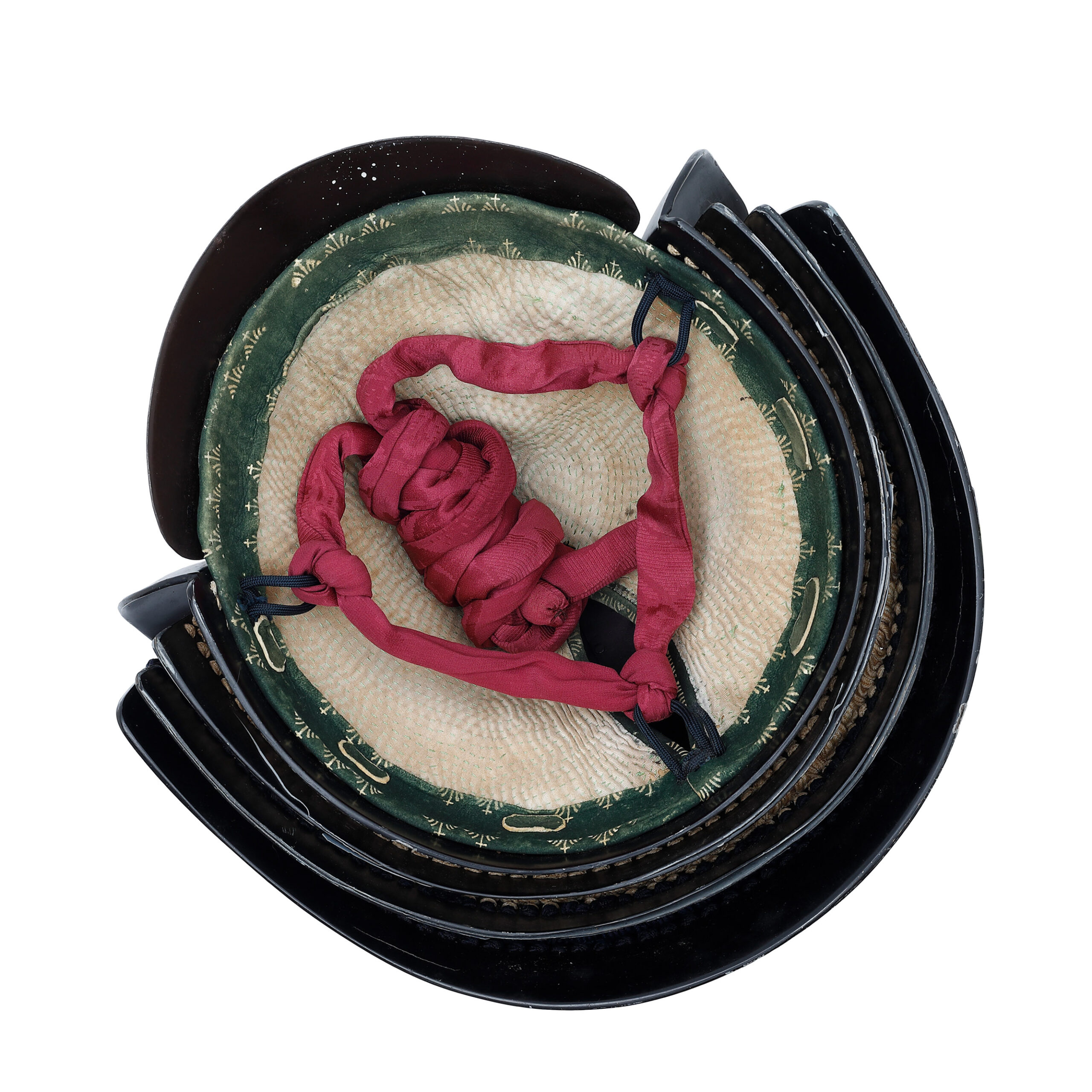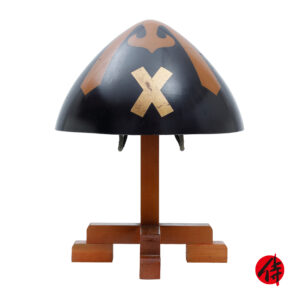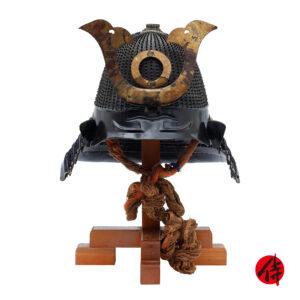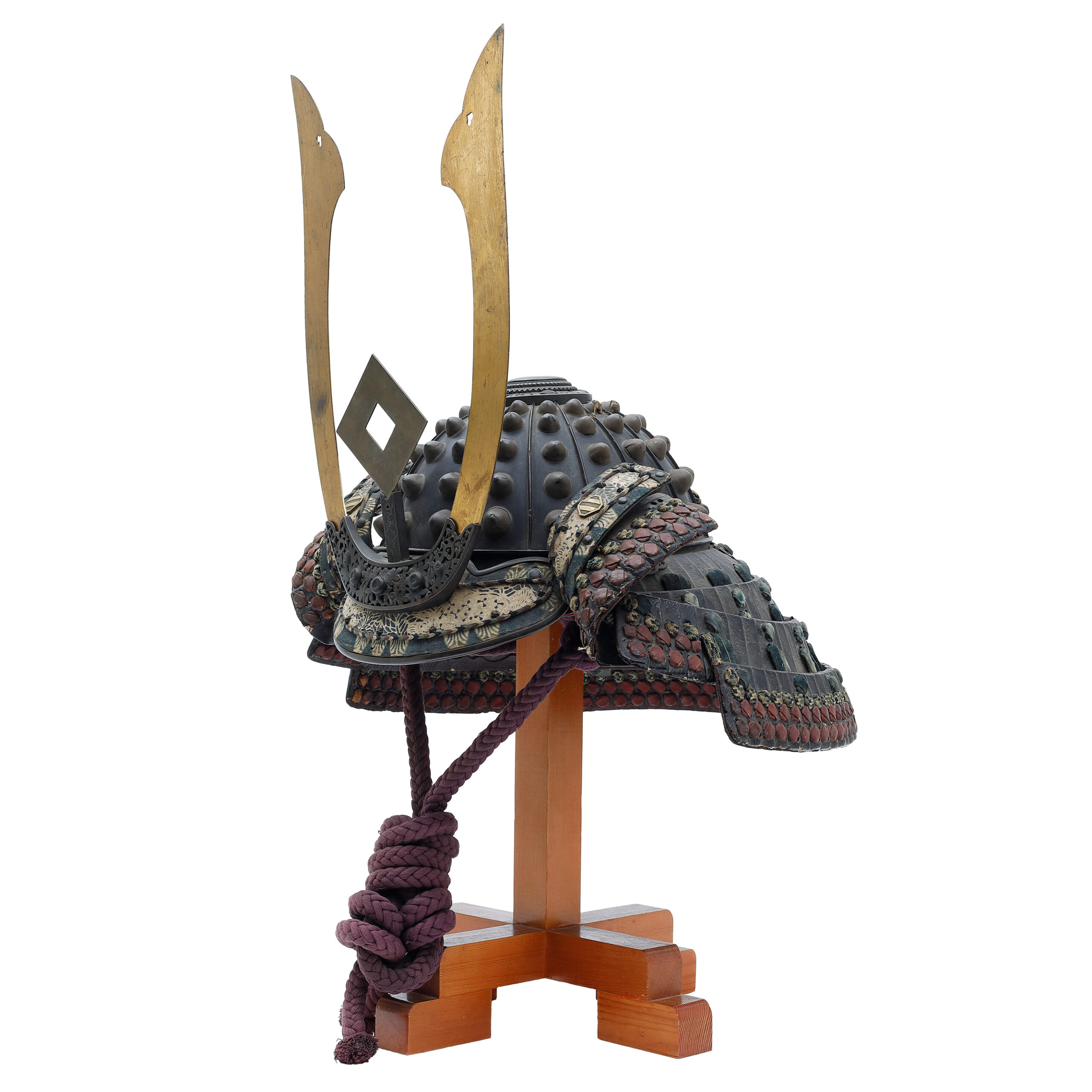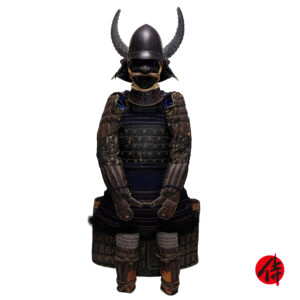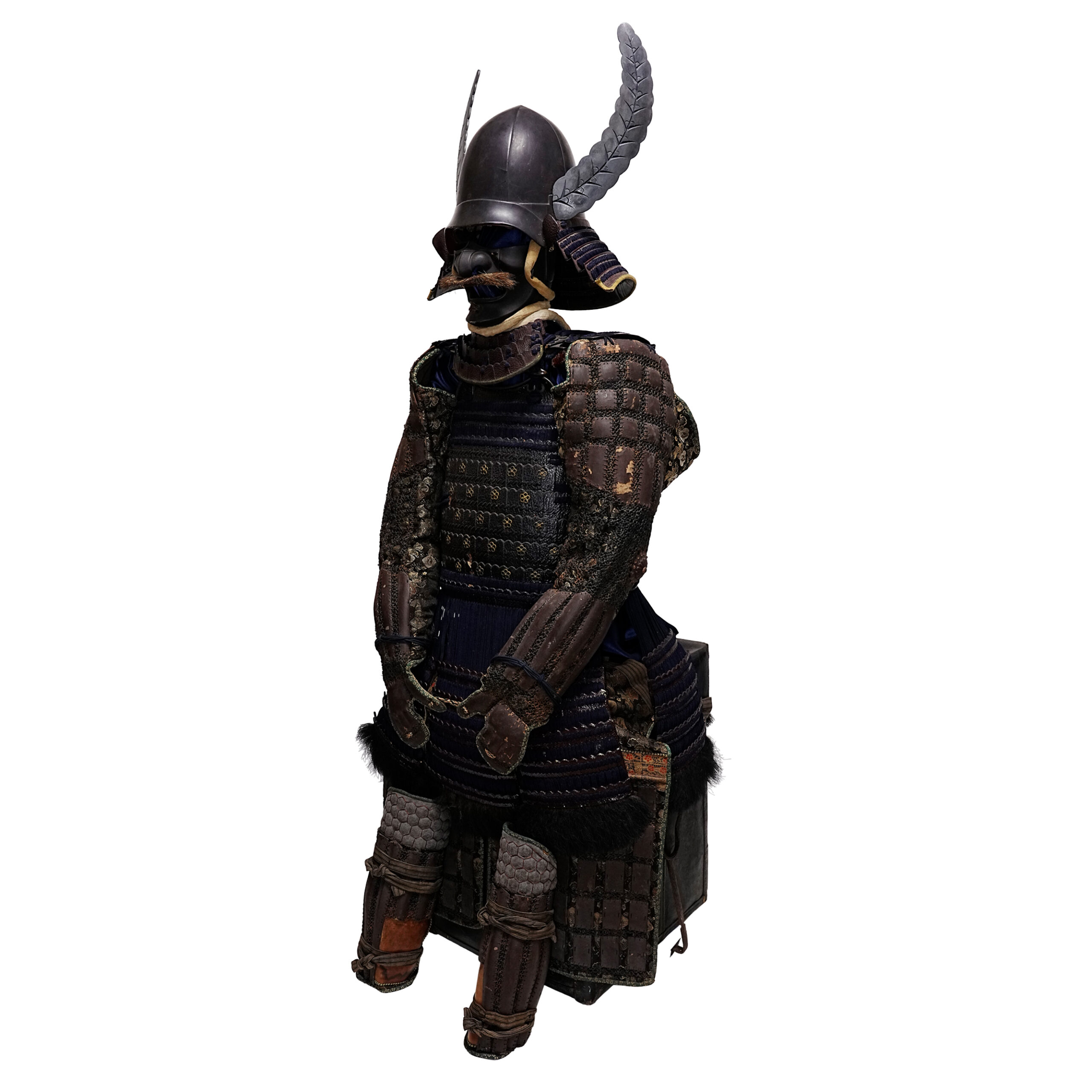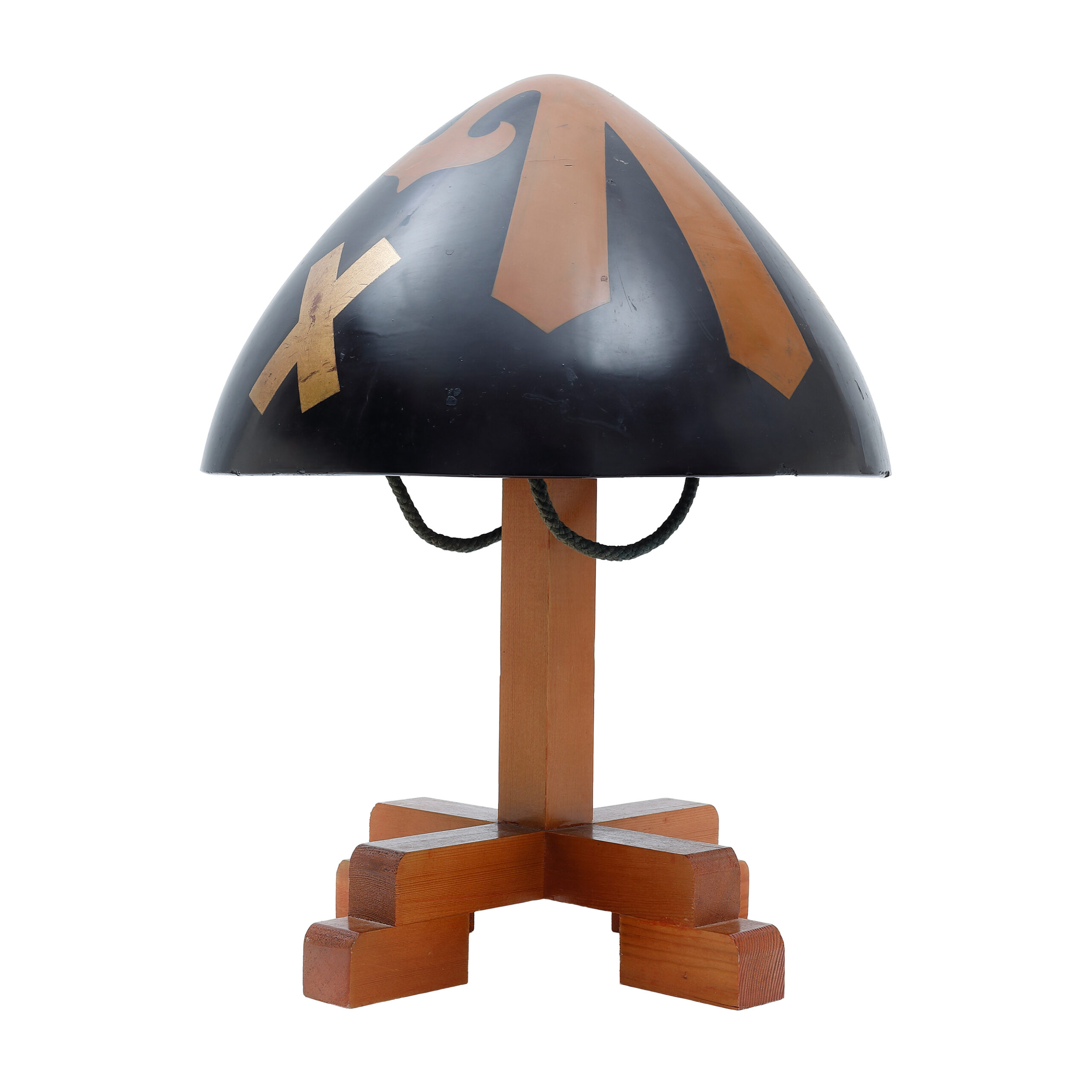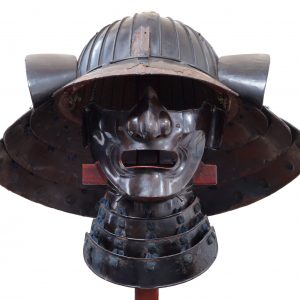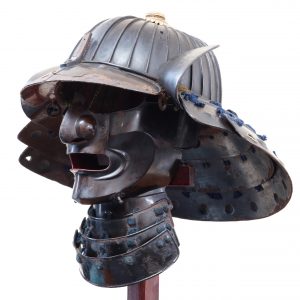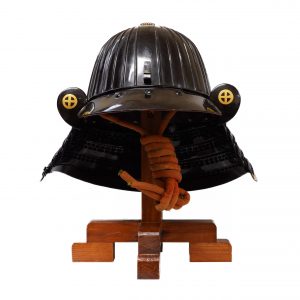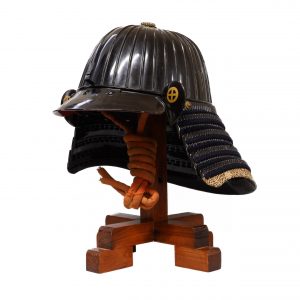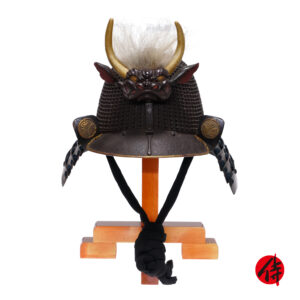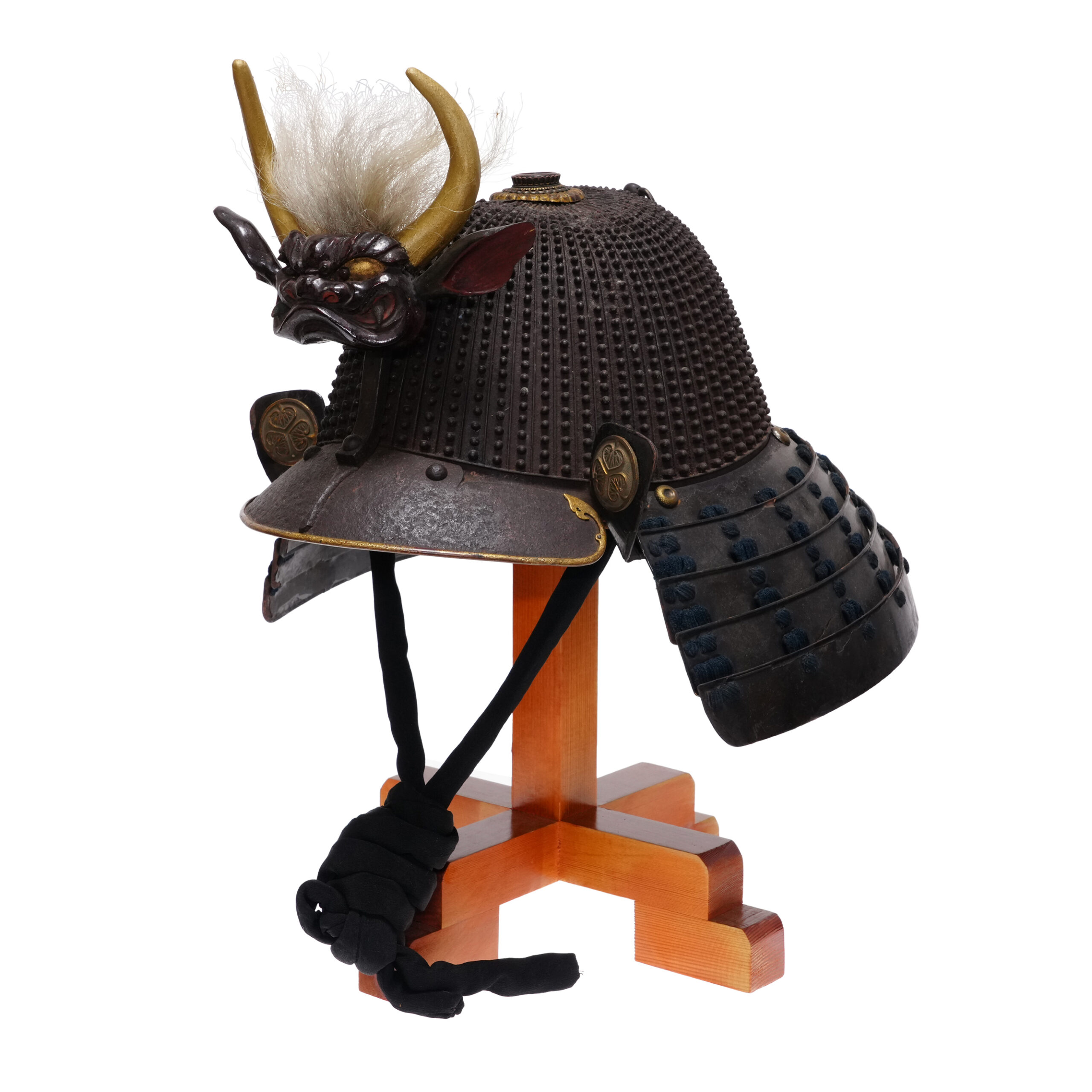Antique Samurai Helmet Sanjukken Suji Kabuto with Hozon Shiryo Certificate

Period: Meiji Period (appraised by The Association for the Research and Preservation of Japanese Helmets and Armor)
Prime Material: Iron
The Kabuto (兜, helmet) is a protector for the head. When people started using Kabutos, this item was initially designed for practical use. However, the principal purpose of its design has changed with time: Samurai warriors tried to express their dignity, personality, or religion by wearing the characteristic designed Kabutos. According to a theory, these uniquely designed Kabutos were made from the late Muromachi to the Edo period. This type of Kabuto is categorized as the Kawari Kabuto (変わり兜), and a variety of materials were used to create them. For example, animal fur, seashells, plants, and papers were used as materials for decoration.
Here, we are introducing you to a little bit more about the history of Kabutos. Before the Kawari Kabuto’s production, the Suji Kabuto (筋兜) has appeared during the Nanbokuchou (南北朝, 1337-1392) period. At that time, the tactic was gradually changed from the piggyback fight style to battle with the Tachi (太刀) sword and the Naginata (薙刀, Japanese halberd) on the ground. Therefore, there was a rise in demand for the weight-saving of the Kabuto. Also, to turn the attack by swords, a new type of structure was invented: the Suji Kabuto. Its form slides swords’ attacks when weapons hit the Kabuto. It is said that the production of the Suji Kabuto prospered in the Muromachi (室町, 1336-1573) period. We estimate that this tendency inspired the Kabuto we deal with here. While it was appraised after the Meiji (明治, 1868-1912) period work, we could imagine that such trend influenced the Kabuto production of later eras after the Edo period. This Kabuto has 30 stripes, meaning 30 small iron plates are connected. It is called Sanjukken Suji Kabuto (三十間筋兜). Sanju means 30 in Japanese. The surface is Tetsusabiji style, which only applies lacquer to the paint base so the iron does not get rusty. It looks less shiny than a normal lacquered surface, but it is a work with a beautiful texture of iron that has stood the test of time.

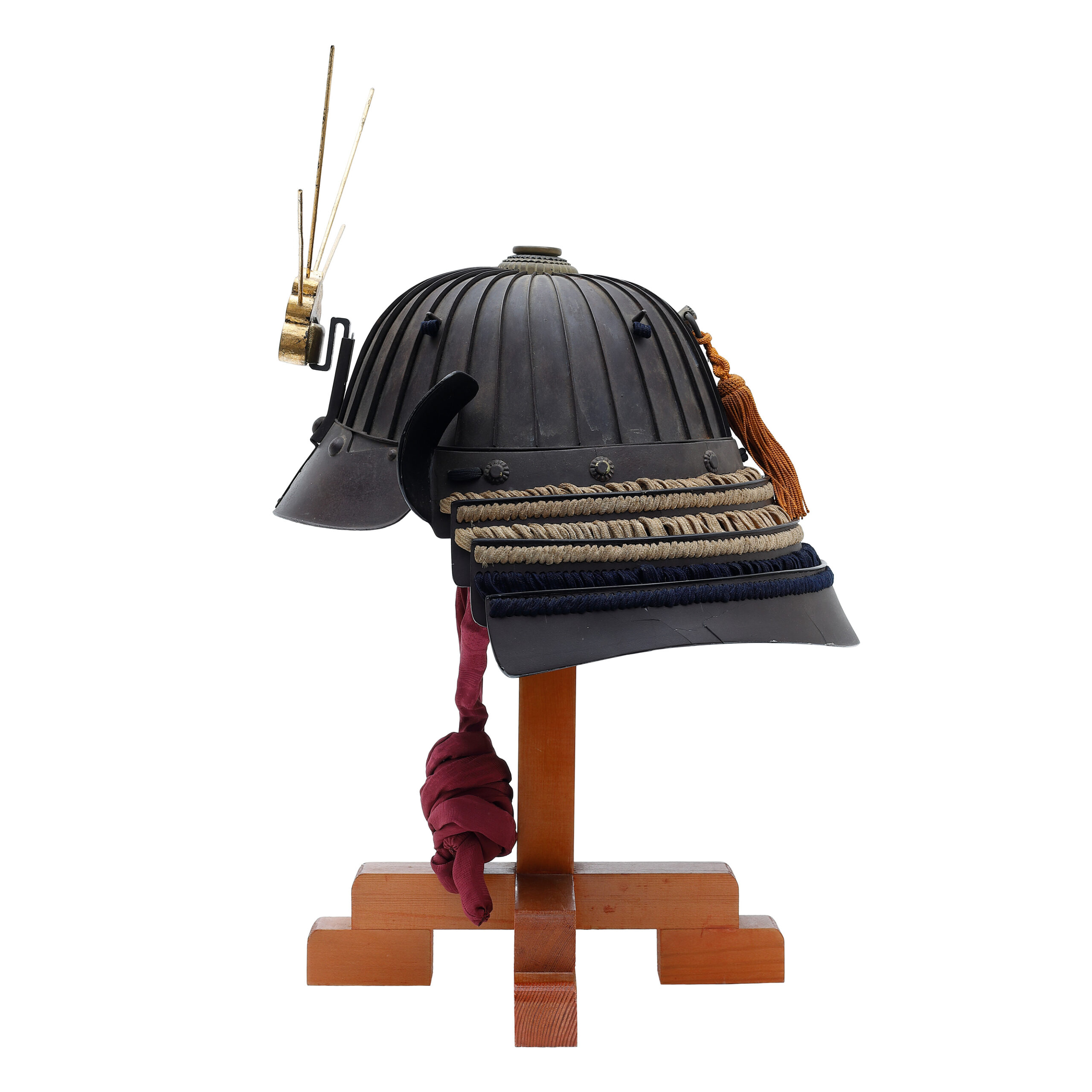
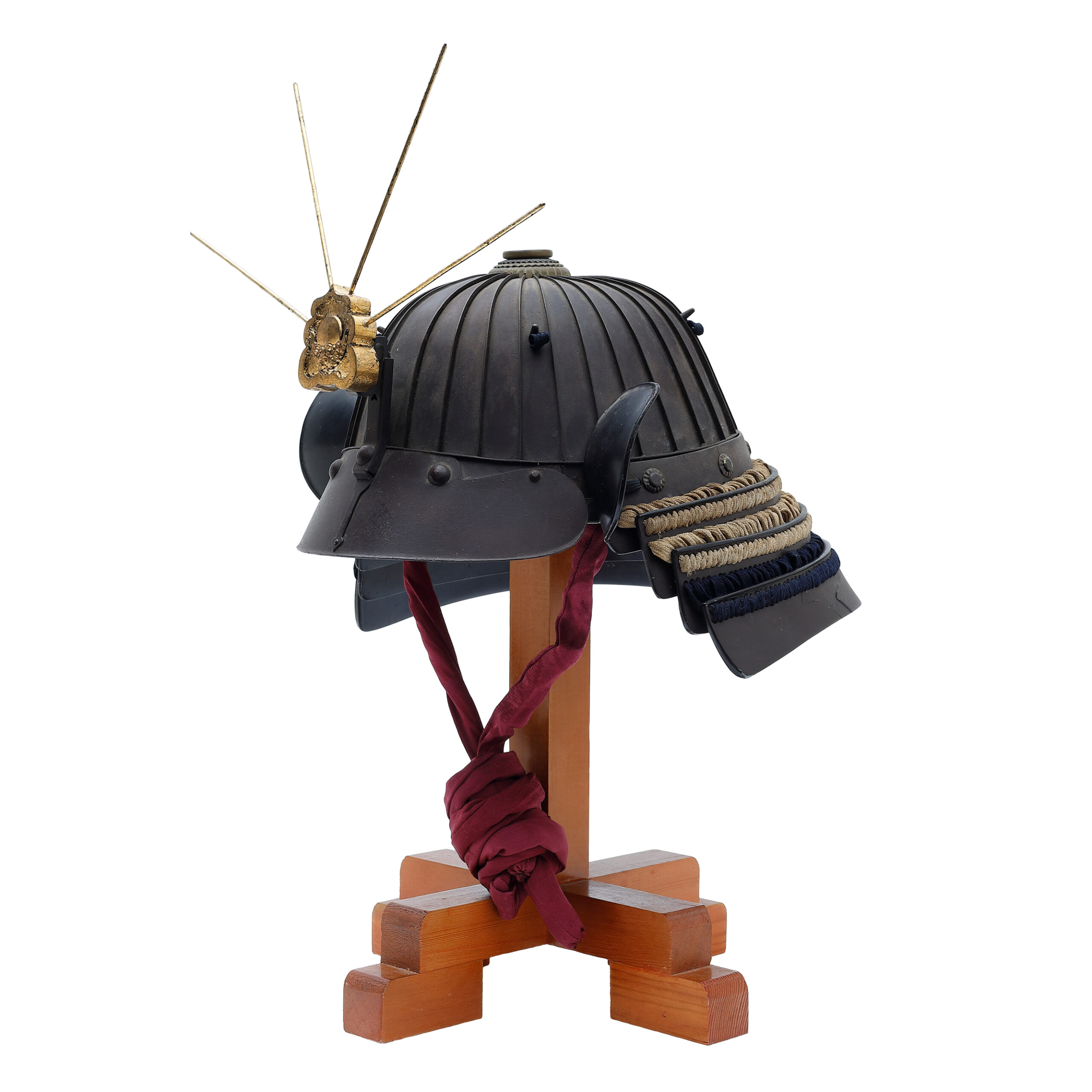

This Kabuto’s Maedatemono (前立物, front decoration) has a unique design. We estimate it is related to a religious idea. The center of the decoration depicts the sun or moon peeking out from clouds. Four slender rod-shaped decorations are attached to this part, making it a halo. Among Maedatemono motifs, there is a famous belief that many Samurai warriors worshiped: the Myouken (妙見) belief. This religion was born in India. It was mixed with the Polestar belief and was brought to Japan from the continent. The Myouken Bosatsu (妙見菩薩, 菩薩 means Bodhisattva) fulfills all wishes such as fertility of rich harvest, peace, the prosperity of the clan, healing of illness, longevity, success in business, traffic safety, academic achievement, marriage, etcetera. The former owner of this armor might have shown his faith by wearing this Kabuto. Since ancient times, the movements of the sun, moon, and stars have been worshiped as mystical, and some countries used to conduct their government using the stars. It is understandable from these examples that designs of the sun or moon were incorporated into battle costumes, as seen in this work.
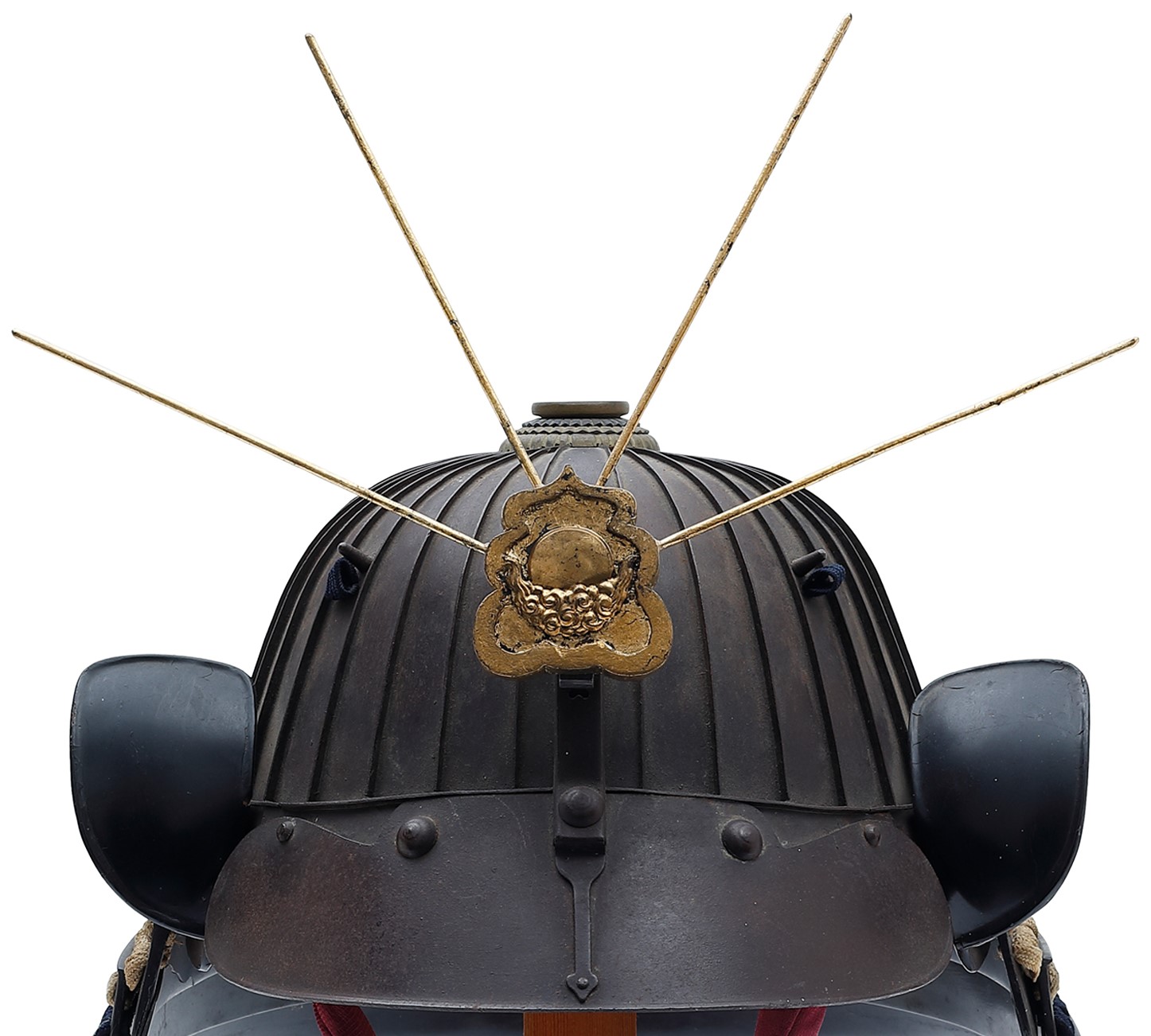
The author’s inscription is engraved on the front of this Kabuto, on the side where the forehead touches. As the inside of this Kabuto was lined with cloth, we could not see all the engraved letters. However, the certificate says it is written as follows: Moriguchi-Ju, Neo Yasumasa Kore Tsukuru (守口住 根尾泰昌作之). Moriguchi (守口) is the name of the place where he lived, and his name is Neo Yasumasa (根尾 泰昌). Neo (根尾) school has appeared in the Edo period. It is said this school was an armorer, and most works were Kabutos. The name of the Neo school is said to come from the fact that they forged iron in the Neo River basin of Mino (美濃, today’s Gifu prefecture). Among these “Neo blacksmiths,” armor makers who created Kabuto bowls appeared, and the elaborate works of shaping Kabuto bowls by riveting many thin iron plates became popular. And they expanded the scope of their activities. Unfortunately, we could not confirm detailed information of the person whose name was engraved on this work, such as to what generation of this school. However, we assume he was a maker of this school, which has been active for a long time.

Certification: Tokugetsu Kicho Shiryo Certificate
The certificate was issued by The Association for the Research and Preservation of Japanese Helmets and Armor, which is the most trusted Japanese armor appraiser in Japan. Hozon Shiryo means special rare article. It is ranked as the fifth highest of five rankings.
This helmet was authenticated on August 27th, 2023, as a Hozon Shiryo, and this paper mentions that this item was made in the after Meiji period.
An English translation of the certificate is available on request. We won’t charge any additional fee.


【About us】
Samurai Museum is located in Tokyo, Japan, exhibiting antique artifacts related to the Samurai history. Samurai Museum Shop is the place for those who are interested in Japanese culture and craftsmanship. We deal with antique Samurai swords/armor, traditional crafts made in Japan and so on.
【Antique Japanese helmet (Kabuto) and Export process】
After receiving the full payment from you, we will apply for its export permit from the Board of Education to legally export the helmet to other countries. It normally takes around 2-4 weeks to receive this permit. And we would like you to expect at least 1.0-1.5 months for your order to arrive at your given address after you ordered.
【Payment Method】
We accept payment through Stripe (Credit card), PayPal, Apple Pay or ChromePay, all of which are secure payment methods. Also, you don’t need to make an account on Stripe for the checkout. If you prefer other payment method, please contact us. After confirming your payment, we will apply for an export permit. You may either pay in JPY, USD, AUD, CAD, EUR, CHF or GBP. The price is set in Japanese Yen. Prices in other currencies are automatically calculated based on the latest exchange rate.

【Shipping Duration】
We normally ship via EMS (Express Mail Service) provided by Japan Post. It usually takes at least 5-14 days to deliver the package after you place an order.
We offer Free International Shipping as long as we can ship your order by EMS. If you prefer other shipping carriers, please contact us.
We will inform you of the order’s tracking number via email. Please make sure you fill out your valid email address correctly.
*If you like to make sure if EMS shipping is available to your country, please contact us.

【How to make sure the condition】
Please keep in mind that what you are going to purchase is an antique item. We uploaded high resolution photos for you to check its condition thoroughly. If you like to see more photos with different angles, please feel free to contact us. We will be happy to send them to you so that you can make informed decision. It is essential for us to know that you are happy with your choice of a sword. and we are prepared to use the best of our ability to serve you.
【How To Contact Us】
Please contact us through email, Facebook Messenger or Live Chat if you have any questions. You can find each icon on the right side of the website. Please click one of them to reach us. We will reply to you within 1-2 business days.
【How To Preserve Antique Samurai Armor/Helmets】
Dryness, humidity, and bad ventilation might deteriorate the condition of antique Samurai armor/helmet. The best temperature to preserve Samurai armor/helmet is around 20℃ in Celsius, and humidity should be about 60%. Direct sunlight should be avoided. We recommend storing armors/helmets in a room with good ventilation. If you like to display them outside the boxes for a prolonged time, we suggest using a glass case in order for dust not to be accumulated easily. In case you don’t use a glass case, please make sure to regularly dust off from the armor/helmets by using a soft brush made of delicate cloth or brush for painting.
If you like to know more about the preservation of this armor, please feel free to contact us.

